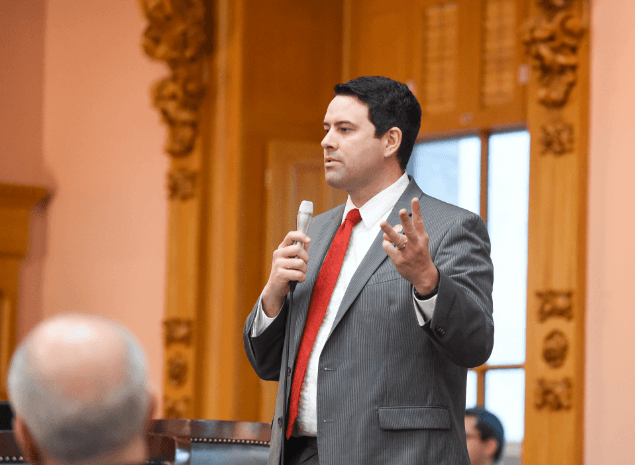The Ohio House of Representatives has passed the state transportation budget, a two-year funding plan that addresses Ohio’s infrastructure needs while utilizing innovations in technology and maintaining a competitive tax structure.
The transportation budget, H.B.26, invests more than $7.8 billion over the next two years through various proposals to both meet Ohio’s current infrastructure needs and position it for continued future growth.
“House Bill 26 strikes a balance between financing Ohio’s transportation priorities while being a responsible watchdog of taxpayer dollars,” says Rep. Rob McColley, who sponsored the bill and chairs the House Finance Subcommittee on Transportation. “A lot of creative ideas and input went into the crafting of this budget, and I am confident that it will help Ohio meet its infrastructure needs in the future.”
H.B.26 retains the taxation of the motor fuel tax at the wholesale level, which ensures that business owners continue to have about a month after purchasing fuel before having to pay tax to the state.
Notably, the bill also continues to exempt compressed natural gas from the motor fuel tax to avoid placing an additional burden on an industry that is still in its early stages.
In an effort to make Ohio’s trucking industry more competitive with other states, the bill creates a pilot program in four specific counties in which registration fees on semis will be cut in half, from $30 to $15, for two years. During that time, the Registrar of Motor Vehicles will be tasked with studying the effectiveness of the pilot program.
The bill emphasizes expanding convenience and availability of local services, including allowing vehicle owners to receive motor vehicle registration notices electronically; permitting a third-party business to advertise in a deputy registrar’s office; and allowing non-government deputy registrars to operate vending machines.
The bill also authorizes the director of transportation to establish variable speed limits that differ from the statutory speed limits on I-670 and US 33 in central Ohio and I-90 near Cleveland.
This corresponds, in part, to various projects in Ohio aimed at expanding the use of technology on roadways. US 33 between Dublin and East Liberty, for example, will be known as the “Smart Mobility Corridor,” a 35-mile stretch designed to foster real-world research into autonomous and connected vehicles.
As reported, H.B.26 now goes to the Ohio Senate for consideration.







